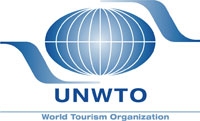International tourism to continue growth this year

Madrid : International tourist arrivals grew by 4% in 2012 to reach 1.035 billion, according to the latest UNWTO World Tourism Barometer. Emerging economies (+4.1%) regained the lead over advanced economies (+3.6%), with Asia and the Pacific showing the strongest results.
Growth is expected to continue in 2013 only slightly below the 2012 level (+3% to +4%) and in line with UNWTO long term forecast.
With an additional 39 million international tourists, up from 996 million in 2011, international tourist arrivals surpassed 1 billion (1.035 billion) for the first time in history in 2012. Demand held well throughout the year, with a stronger than expected fourth quarter.
By region, Asia and the Pacific (+7%) was the best performer, while by sub-region South-East Asia, North Africa (both at +9%) and Central and Eastern Europe (+8%) topped the ranking.
“2012 saw continued economic volatility around the globe, particularly in the Eurozone. Yet international tourism managed to stay on course” said UNWTO Secretary-General, Taleb Rifai. “The sector has shown its capacity to adjust to the changing market conditions and, although at a slightly more modest rate, is expected to continue expanding in 2013. Tourism is thus one of the pillars that should be supported by governments around the world as part of the solution to stimulating economic growth,” he added.
UNWTO forecasts international tourist arrivals to increase by 3% to 4% in 2013, much in line with its long term forecast for 2030: +3.8% a year on average between 2010 and 2020. This outlook is confirmed by the UNWTO Confidence Index. Compiled among over 300 experts worldwide, the Index shows that prospects for 2013 are similar to the evaluation of last year (124 points for 2013 against 122 for 2012).
By region, prospects for 2013 are stronger for Asia and the Pacific (+5% to +6%), followed by Africa (+4% to +6%), the Americas (+3% to +4%), Europe (+2% to +3%) and the Middle East (0% to +5%).
International tourist arrivals to Europe, the most visited region in the world, were up by 3%; a very positive result in view of the economic situation, and following a strong 2011 (+6%). Total arrivals reached 535 million, 17 million more than in 2011. By sub-region, Central and Eastern Europe destinations (+8%) experienced the best results, followed by Western Europe (+3%). Destinations in Southern Mediterranean Europe (+2%) consolidated their excellent performance of 2011 and returned in 2012 to their normal growth rates.
Asia and the Pacific (+7%) was up by 15 million arrivals in 2012, reaching a total 233 million international tourists. South-East Asia (+9%) was the best performing sub-region much due to the implementation of policies that foster intraregional cooperation and coordination in tourism. Growth was also strong in North-East Asia (+6%), as Japanese inbound and outbound tourism recovered, while it was comparatively weaker in South Asia (+4%) and in Oceania (+4%).
The Americas (+4%) saw an increase of 6 million arrivals, reaching 162 million in total. Leading the growth were destinations in Central America (+6%), while South America, up by 4%, showed some slowdown as compared to the double-digit growth of 2010 and 2011. The Caribbean (+4%), on the other hand, is performing above the previous two years, while North America (+3%) consolidated its 2011 growth.
Africa (+6%) recovered well from its setback in 2011 when arrivals declined by 1% due largely to the negative results of North Africa. Arrivals reached a new record (52 million) due to the rebound in North Africa (+9% as compared to a 9% decline in 2011) and to the continued growth of Sub-Saharan destinations (+5%). Results in the Middle East (-5%) improved after a 7% decline in 2011, yet the region recorded an estimated 3 million international tourist arrivals less in 2012 in spite of the clear recovery in Egypt.
Available data on international tourism receipts and expenditure for 2012 covering at least the first nine months of the year confirm the positive trend in arrivals. Among the top ten tourist destinations, receipts were up significantly in Hong Kong (China) (+16%), the USA (+10%), the UK (+6%) and Germany (+5%). At the same time, a significant number of destinations around the world saw receipts from international tourism increase by 15% or more – Japan (+37%), India and South Africa (both +22%), Sweden and the Republic of Korea (both +19%), Thailand (+18%) and Poland (+16%).
Although the highest growth rates in expenditure abroad among the ten top markets came from emerging economies – China (+42%) and Russia (+31%) – important traditional source markets, showed particularly good results. In Europe, and despite economic pressures, expenditure on international tourism by Germany held well at +3%, while the UK (+5%) returned to growth after two flat years. In the Americas, both the USA and Canada grew at 7%. On the other hand, France (-7%) and Italy (-2%) registered declines in travel expenditure.
Smaller markets with significant growth were Venezuela (+31%), Poland (+19%), Philippines (+17%), Malaysia (+15%), Saudi Arabia (+14%), Belgium (+13%), Norway and Argentina (both +12%), Switzerland and Indonesia (both +10%).- UNWTO















